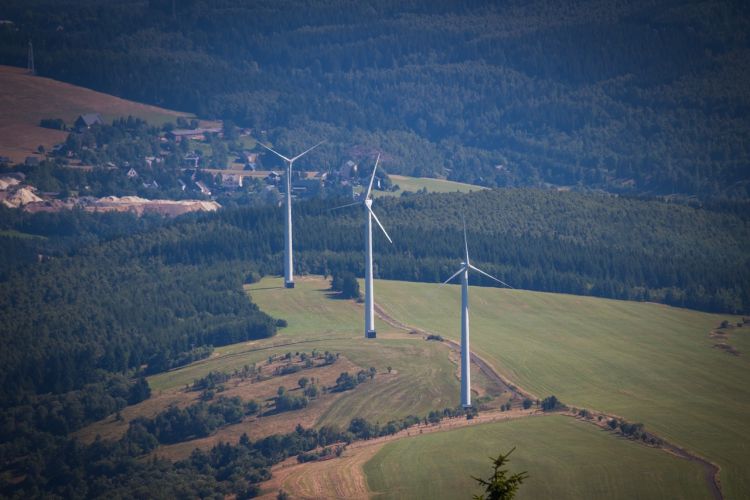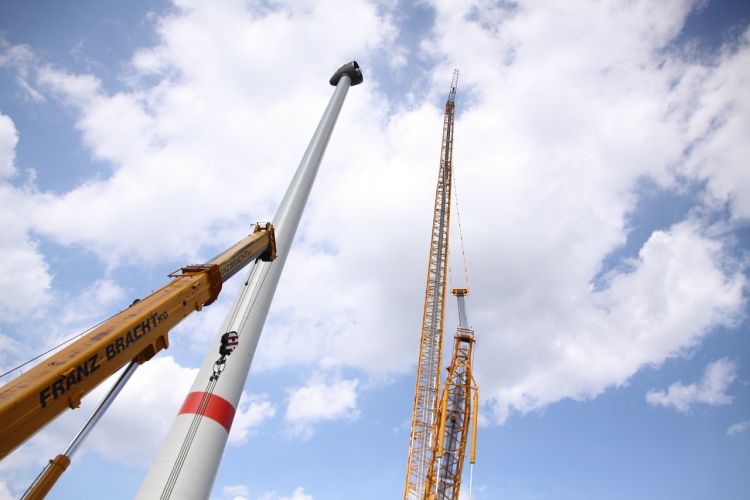

Inspect & maintain with foresight
The rotor blades of a wind turbine are exposed to enormous forces in daily operation, have to withstand rain and strong winds and still reliably produce energy. If a rotor blade erodes at its edges, its coating dissolves or the surface bursts due to frost, not only does the system performance deteriorate. Even supposedly minor rust damage to the tower or an oil loss of the nacelle not only reduce the safety of the system. They sometimes also harm the environment.
Many operators shy away from effort and costs for more than the legally required maintenance and inspections. However, if you limit yourself to these, you risk that minor damage will grow unnoticed into larger expensive ones and that instead of stopping the system for a few hours for maintenance, an expensive total failure threatens. In order to reliably plan and prepare larger inspections and maintenance measures , so that the not insignificant costs are really worthwhile and the time of industrial climbers and technicians is sensibly invested, the drone inspection for wind turbines is definitely worthwhile. This gives you precise data and high-resolution aerial images from almost every conceivable perspective, which can be used as often as you like and for different purposes.

The images taken during the drone inspection of wind turbines later serve as an indication for technicians and industrial climbers. They can then carry out repairs and repairs that have proven necessary during the drone inspection with the appropriate tool either directly on the system or analyze the (suspected) damage in more detail (for example, by tapping the rotor blade and testing the crack depth). In this way, drone inspection uncovers minor damage, such as the inconspicuous crack in the surface of a rotor blade, and paves the way for extensive inspection by industrial climbers and technicians who limit the damage and possibly repair it immediately without major hassle. As a plant operator, you not only save downtimes and repair costs. You also have the good conscience to have regularly checked the condition of your system and to have "tackled" damage in the best possible way and at an early stage.
In addition to the inspection of wind turbines and their components, drones are ideally suited to accompany and document the construction of one or more turbines. Construction documentation by drone offers perspectives that cannot be reached from the ground and is therefore an enormous relief for teams on the ground who have to perform complex and time-consuming tasks. For example, use the drone to check the angle at which a rotor blade is heading towards the hub to make its installation as smooth as possible. Drone flight is also suitable for the publication of video recordings of the construction. In this way, you can inform interested citizens as well as involved business partners about the progress of the project and provide a completely new view of the energy supplier wind turbine.

Drone inspection usually requires less personnel than for sophisticated maintenance. As a rule, you will have to expect the deployment of at least two people: a pilot who flies the drone and a person who controls the camera from the ground and observes the recordings. For working with the drone, the weather plays a major role. Of course, heavy rain and storms are not ideal operating conditions, as the quality of the images suffers and there is a greater risk of collisions with the wind turbine.
In most cases, the drone is ready for use in a short time and can quickly start its work. If the drone flight can be carried out as planned, the components of the system are systematically flown off one after the other from different perspectives. At the request of the operator or an operator who can assess which parts of the plant are particularly vulnerable, they can also be filmed more intensively and repeatedly. Afterwards, the recordings are evaluated and prepared for further use.
Contact wind-turbine service providers who offer drone inspection for wind turbines and who support you in your project with know-how and experience.
